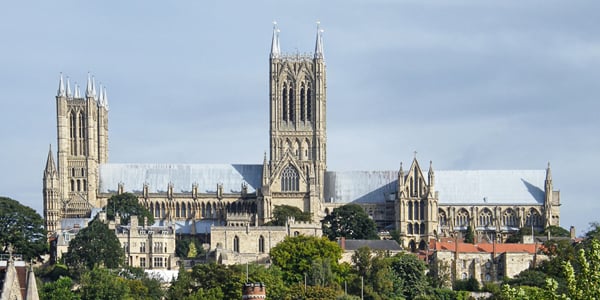Whether you live, work, or study in Lincoln, the city’s rich history could be overwhelming. So, we dug up ten interesting facts to make any Lincolnite proud:
■ The name Lincoln is believed to derive from the Iron Age Celtic Lindon, meaning pool by the hill; a reference to the Brayford pool and the hill upon which the modern city stands. These features provided good fishing, farming, transport links (via the river Witham) and defences against other tribes.
■ Around 2,000 years ago, the Romans also saw the potential of the local topography and built a legionary fortress on the hill, the ruins of which can still be seen today. This was known as Lindum Colonia and gave rise to the city’s modern name Lincoln.
■ The Fosse Dyke canal, which runs from the Brayford pool to join the river Trent at Torksey, was built by the Romans to improve trading links from Lincoln. It is believed to be the oldest working canal in the country.
■ The city became an important trading centre under the Vikings, and many of the modern street names, such as Danesgate and Flaxengate, derive from this period.
■ Following his successful invasion of England in 1066, William the Conqueror ordered the building of a castle on the site of the Roman fortress and the city once again became an important strategic asset.

Lincoln Cathedral, once the tallest building in the world.
■ The building of Lincoln Cathedral was started in 1072 and continued to until 1311. The central tower was topped with a spire, taking the total height to a reputed 525 feet (160 meters), making it the world’s tallest building until the spire collapsed during a storm in 1549.
■ The wool trade saw Lincoln expand and by the 13th century, when it became England’s third largest city, after London and York.
■ Lincoln was at the centre of the 18th century agricultural revolution, manufacturing machinery for the farms in the region. This expertise continued into the 19th century, with Lincoln companies such as Ruston and Hornsby, Clayton, William Foster and Proctor becoming world leaders in heavy machinery, including steam engines, cranes, excavators and diesel engines.
■ Lincoln was hit by a typhoid epidemic in 1905 which killed more than a hundred people. The outbreak was caused by polluted drinking water. The Westgate water tower was built as part of the efforts to clean up the water supply in the city.
■ Fittingly for a city which started out as a fortress, Lincoln’s contribution to modern warfare was the invention of the tank. Built by William Foster & Co during World War One, the very first tanks were tested on the area now occupied by Tritton Road.





